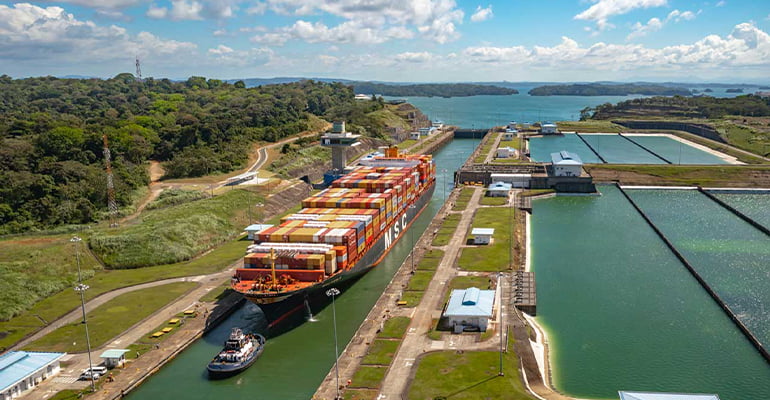The Panama Canal Authority (ACP) has announced it will reduce daily transits to 31 from 32 as a severe drought continues and may last until next year. - Michele Labrut | Oct 02, 2023
To avoid delays and ship backlogs, the ACP will also offer a new schedule for the Neopanamax locks and the Panamax locks, part of efforts to allow customers to adjust their itineraries and reduce waiting times for vessels that do not have a daily transit schedule.
In September, The ACP Administrator said that it could make additional transit reductions if the drought persists. “If we must consider transit reductions, we will. This would be to continue with a draught of 13.4 metres. We will not reduce draught. If we do that, it will impact 70% of our shippers,” said ACP Administrator Ricaurte Vasquez. “We will manage the water levels and we are looking for long-term solutions.”
The restrictions have generated long queues of waiting vessels, although the canal administration said Friday that levels were normal.
The effects have led the canal to estimate a reduction in revenues of up to $200 million by 2024.
Experts have warned of possible disruptions to maritime trade in the face of what is shaping up to be an even drier period next year because of El Nino phenomenon, which “Has been very severe this year. We anticipate that in the upcoming months, in the absence of significant rain, we’ll have to be prepared,” added Vasquez.
Copyright © 2023. All rights reserved. Seatrade, a trading name of Informa Markets (UK) Limited.



Why does a drought matter with seawater?
The Canal locks use freshwater and gravity
Wtf? Do they dump freshwater into the ocean each time they release a boat into it?!
In a sense yes. The canal lifts vessels 20m vertically and it’s designed to use the freshwater/rain that one would normally expect in Central America.
https://youtu.be/jh79YSCC8mM this video does a good job of describing how it was built and how it works.